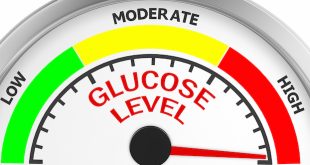What is celiac disease?
Celiac disease is an autoimmune disorder of the digestive system. When people with celiac disease eat gluten – a protein found in wheat, rye and barley – it causes their immune system to attack the small intestines, which become damaged. This damage prevents the body from properly absorbing nutrients in your food, including protein, fat, carbohydrates, vitamins and minerals.
What causes celiac disease?
Celiac disease is an inherited condition. People who have a close relative (parents, brothers or sisters) with the condition have a high risk of getting it as well.
Certain environmental factors can also cause celiac disease. These factors include emotional stress, pregnancy, surgery, or an infection (for example, traveller’s diarrhea or pneumonia).
There is an association between celiac and type 1 diabetes: between four and six percent of people with type 1 diabetes also have celiac disease. However, researchers are not sure of the reasons for this.
What are the symptoms of celiac disease?
Some people with celiac disease don’t have any noticeable symptoms for some time. In fact, the disease is often undiagnosed because people only notice symptoms once damage to their small intestines has occurred. This is why testing for celiac disease is important for people with type 1 diabetes.
Although the symptoms can vary greatly between people, the more common symptoms of celiac disease include:
- Frequent, unexplained low blood sugar levels
- Stomach bloating, cramps and gas
- Frequent diarrhea, and foul-smelling stool
- Indigestion and nausea
- Extreme weakness and tiredness
- Poor weight gain in babies and children
- A severe, itchy rash on the elbows, knees, scalp, back or buttocks (this is called dermatitis herpetiformis)
What are the effects of celiac disease?
In people with celiac disease, the immune system may respond to gluten in a number of harmful ways. These include:
- Inflammation and damage of the small intestine
- Poor absorption of food nutrients, including protein, vitamins and minerals, carbohydrates and fat
- Anemia
- Malnutrition
- Certain cancers of the gastrointestinal tract
- In women, an increased risk of infertility and miscarriage, and osteoporosis
- In children, poor growth and stature, and delayed puberty
How is celiac disease diagnosed?
A small intestinal biopsy is the only definite way of diagnosing celiac disease. (A biopsy is a procedure where tissue is removed from the body and tested to determine the presence, cause or extent of a disease.)
There are also some blood tests available now that can be done in people who have mild symptoms of celiac disease, and those who are at high risk of getting it. However, these tests may only suggest that a person has celiac disease, and do not replace the need for an intestinal biopsy.
How is celiac disease treated?
Unfortunately, the only treatment for celiac disease at this time is a gluten-free diet. This means completely avoiding products that contain gluten, including bread, pasta and most baked goods. You may also need to take a daily vitamin supplement. (Some medications include gluten; be sure to tell your pharmacist if you have celiac disease.)
When gluten is completely avoided, the intestine will begin to heal and any symptoms of celiac disease will be relieved.
For more information about following a gluten-free diet, including tips on gluten-free carbohydrates, click here.
 Diabetes Care Community Learn, connect and care
Diabetes Care Community Learn, connect and care




